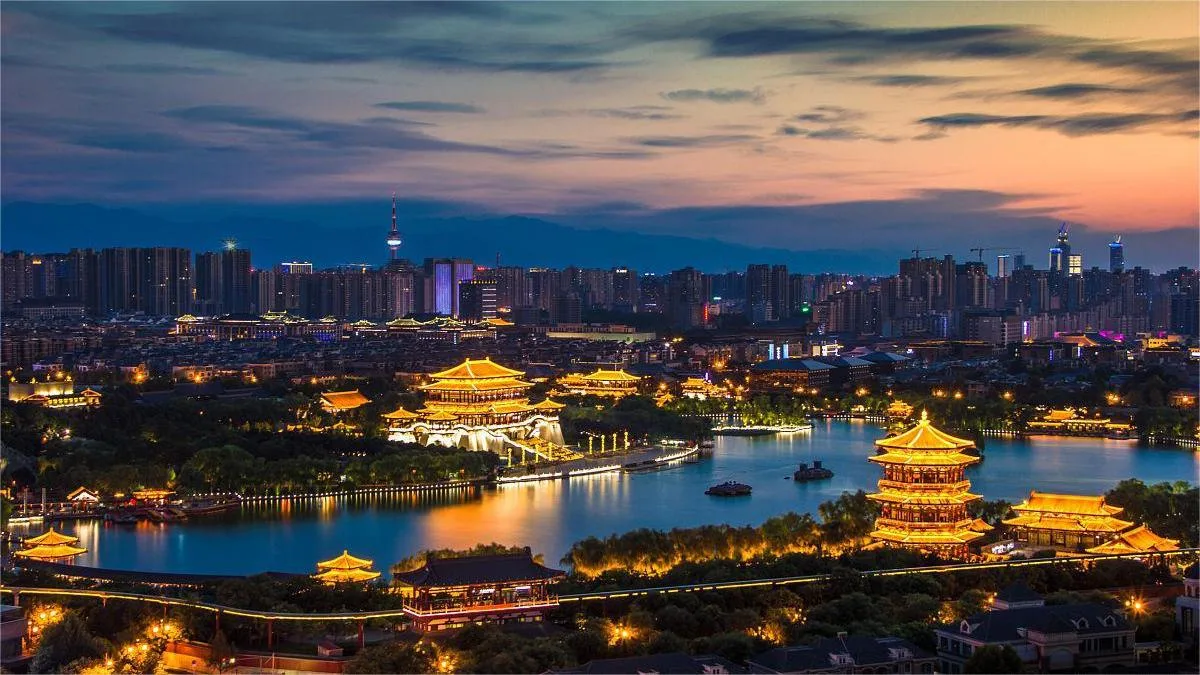Xi’an, formerly known as Chang’an, stands as one of China’s ancient capitals and a pivotal birthplace of Chinese civilization. This city bears the weight of millennia of history, witnessing the rise and fall of numerous dynasties, making it a spiritual symbol of the Chinese nation.
Situated in the Guanzhong Plain of the Yellow River Basin, Xi’an boasts a strategic geographic location that has made it a center of politics, economy, and culture since ancient times. During the Western Zhou period, Xi’an emerged as a royal capital, marking the beginning of its journey as a political hub. Subsequently, dynasties such as the Qin, Han, and Tang established their capitals here, enriching Xi’an’s historical and cultural legacy.
During the Qin Dynasty, Xi’an, then known as Xianyang, witnessed the establishment of the first unified central authoritarian state in Chinese history under Emperor Qin Shi Huang. Implementing a series of reforms such as standardizing weights and measures, script, and currency, Emperor Qin laid the foundation for over two millennia of feudal society in China. Additionally, Emperor Qin embarked on monumental projects like the construction of the Great Wall and the mausoleum of Emperor Qin Shi Huang, showcasing the grandeur of the Qin Dynasty.
The Han Dynasty continued Xi’an’s role as a political center, with Emperor Gaozu of Han founding the Han Dynasty here, initiating a reign that lasted over four hundred years. During the Han Dynasty, Xi’an made significant achievements in culture, arts, science, and technology. Zhang Qian’s mission to the Western Regions opened up the Silk Road, facilitating cultural exchanges between East and West. Sima Qian’s “Records of the Grand Historian” provided invaluable historical records for Chinese historical studies.
The Tang Dynasty marked another glorious period in Xi’an’s history. As a cosmopolitan metropolis, Xi’an attracted merchants and envoys from around the world. The grand scale and orderly layout of Chang’an, the capital of the Tang Dynasty, epitomized the prosperity and flourishing of the era. During the Tang Dynasty, Xi’an reached the pinnacle of cultural and artistic achievements, producing eminent poets such as Li Bai, Du Fu, and Bai Juyi, whose poetic masterpieces have endured through the ages, becoming treasures of Chinese culture. Additionally, Tang Dynasty achievements in painting, sculpture, music, and other art forms left behind a rich cultural legacy for future generations.
Xi’an’s cultural heritage is also reflected in its unique architectural artistry. As a former capital during thirteen dynasties, Xi’an possesses a wealth of ancient architectural treasures such as the Great Wild Goose Pagoda, the Small Wild Goose Pagoda, the Bell Tower, and the Drum Tower. These structures not only hold immense historical value but also exemplify the distinctive style and exquisite craftsmanship of ancient Chinese architecture. Among them, the Great Wild Goose Pagoda, built by the Tang Dynasty monk Xuanzang to preserve Buddhist scriptures brought from India, has become one of Xi’an’s iconic landmarks.
In addition to architectural artistry, Xi’an’s traditional culture is evident in its folk customs and folk arts. The region boasts a diverse array of folk art forms such as Qinqiang opera, shadow puppetry, and clay sculpture, each imbued with rich local characteristics. These folk art forms not only enrich the spiritual lives of the people but also inject new vitality into Xi’an’s cultural heritage and development.
Furthermore, Xi’an is a significant hub for cultural relics and ancient sites in China. Surrounding Xi’an, numerous ancient ruins and tombs abound, including the Mausoleum of Emperor Qin Shi Huang, the ruins of the Han Dynasty Chang’an City, and the ruins of the Tang Dynasty Daming Palace. The artifacts unearthed from these sites, including pottery, jade, gold and silverware, and calligraphy and paintings, serve as vital materials for researching ancient Chinese history and culture.
It is worth mentioning that Xi’an was also the starting point of the Silk Road, an important channel for ancient East-West trade and cultural exchange. Witnessing the intermingling of Eastern and Western civilizations along the Silk Road, Xi’an’s culture exhibits a diverse character, blending the profound heritage of Central Plains culture with unique elements from the Western Regions.
Today, Xi’an has transformed into a modern international metropolis, yet its historical and cultural allure remains undiminished. In the streets and alleyways of Xi’an, one can sense the rich historical atmosphere. Museums, ancient sites, and other locations allow visitors to marvel at the glorious achievements of ancient civilization. Xi’an’s historical and cultural heritage not only adds a unique charm to the city but also makes significant contributions to the cultural inheritance and development of the Chinese nation.


